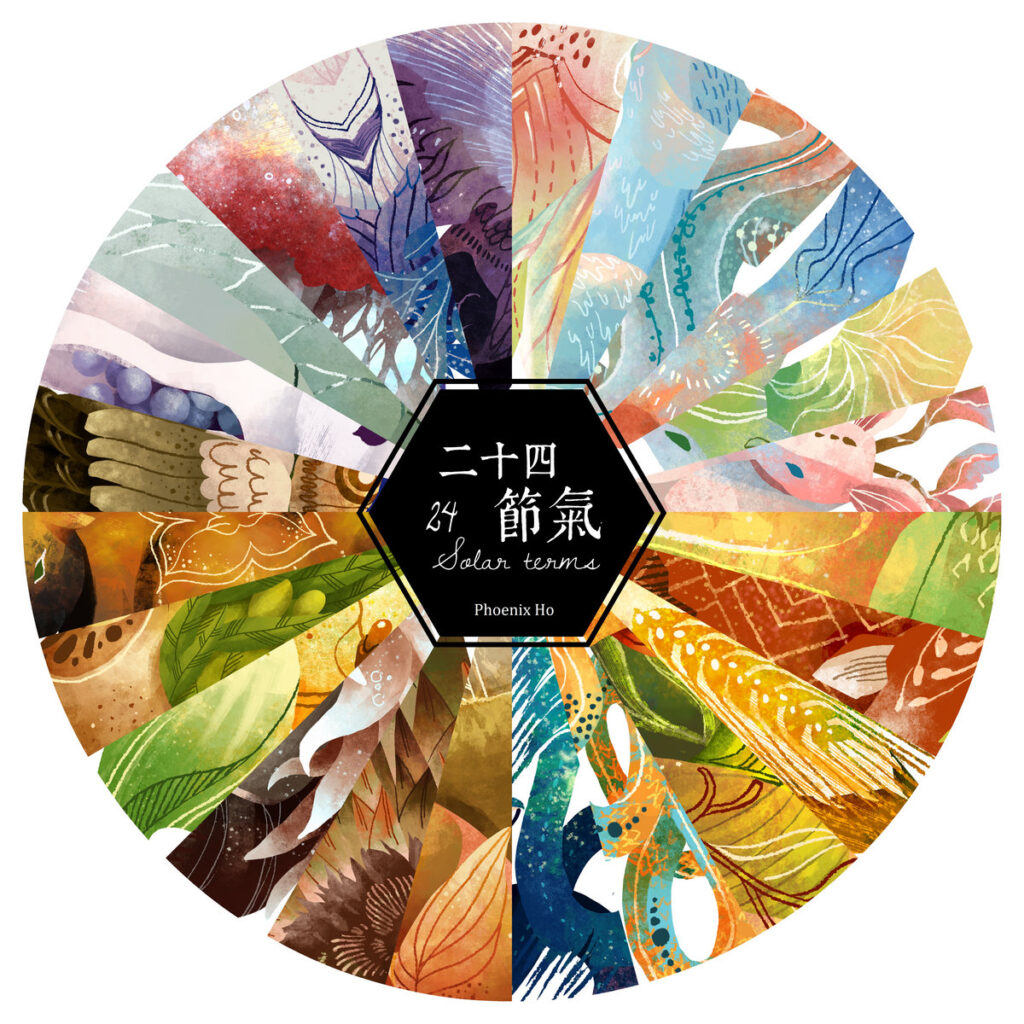按照中国农历的纪年法,每个月都有两个节气,一年共有24个节气。
According to the Chinese lunar calendar, each month has two solar terms, and there are 24 solar terms in a year.
节气是中国农历特有的,中国古人在长期的生产劳动中,逐渐认识到地球绕太阳运行一周的时间是固定不变的365又1/4天,他们把它叫做”一年”,又根据太阳和地球的相互关系,把一年的天数分成24等分,用来表示季节和气候的变化。这样,每15天就有一个节气,每个月就有两个节气了。二十四节气在公历中的日期几乎是固定的,上半年(1~6月)的节气都在每个月的6日和21日前后;下半年(7~12月)的节气都在每个月的8日和23日前后。
The Chinese ancient people gradually realized that the earth’s orbit around the sun was a fixed 365 and 1/4 days during their long-term production work, which they called “one year”, and divided the number of days in a year into 24 equal parts according to the mutual relationship between the sun and the earth to express the seasons and climate changes. In this way, there is one festival in every 15 days, and two festivals in each month. The dates of the 24 solar terms are almost fixed in the Gregorian calendar, with the first half of the year (January to June) falling on or around the 6th and 21st of each month, and the second half (July to December) falling on or around the 8th and 23rd of each month.
二十四节气的名称和意义分别是:
The names and meanings of the twenty-four solar terms are
立春、立夏、立秋、立冬表示四季的开始。
The beginning of spring, summer, autumn and winter indicate the beginning of the four seasons.
春分、秋分是一年中昼夜一样长的两天。
The spring and autumn equinoxes are the two days of the year when day and night are as long as each other.
夏至是一年中白天最长、黑夜最短的一天。
The summer solstice is the day with the longest day and shortest night of the year.
冬至是一年中白天最短、黑夜最长的一天。
The winter solstice is the day of the year with the shortest days and longest nights.
雨水是开始下雨的意思。
Rain means to start raining.
惊蛰表示春雷响过以后,冬眠的昆虫被惊醒了。
The term “jingzhe” indicates that insects that have been hibernating in the winter are awakened after the thunder of spring.
清明是说春天到了以后,明净的春色代替了冬季寒冷枯黄的景色。
Qingming means that when spring arrives, the bright and clear colors of spring replace the cold and yellow scenery of winter.
谷雨表示从此雨水增多,对五谷的生长很有好处。
The rainy season indicates an increase in rainfall from now on, which is good for the growth of grains.
小满表示在夏季成熟的农作物籽粒开始饱满了。
Xiaoman indicates that the seeds of crops that matured in the summer are starting to fill up.
芒种告诉人们小麦已经成熟了。
The mango tells people that the wheat is ripe.
小暑、大暑表示天气炎热的程度,大暑是一年中最热的时候。
Minor and major summer heat indicates the degree of hot weather, and major summer is the hottest time of the year.
处暑表示炎热的天气快要过去了。
The summer heat indicates that the hot weather is almost over.
白露告诉人们开始下露水,天气就要冷了。
White dew tells people that the dew is starting to fall and the weather is about to get cold.
寒露表明露水已重,天寒加剧。
Cold dew indicates that the dew has become heavy and the coldness of the sky has intensified.
霜降是开始下霜的意思。
Frostfall means the beginning of frost.
小雪、大雪表示到了下雪的时节和雪量大小的差别。
Light snow and heavy snow indicate the difference between the time of year when it snows and the amount of snow.
小寒、大寒表示冬天寒冷的程度,大寒是一年中最冷的时候。
The small cold and big cold indicate the degree of winter cold, and the big cold is the coldest time of the year.
二十四节气对中国的农业生产起很大的作用,人们为了方便记忆,还编出了《二十四节气歌》:春雨惊春清谷天,夏满芒夏暑相连,秋处露秋寒霜降,冬雪雪冬小大寒。上半年是六、二一,下半年是八、二三。
The twenty-four solar terms play a great role in China’s agricultural production, people also made up the “twenty-four solar terms song” in order to facilitate the memory: spring rain alarm spring clear valley days, summer full of mango summer heat connected, autumn at the dew autumn cold frost fall, winter snow snow winter small big cold. The first half of the year is six, two one, and the second half is eight, two three.

